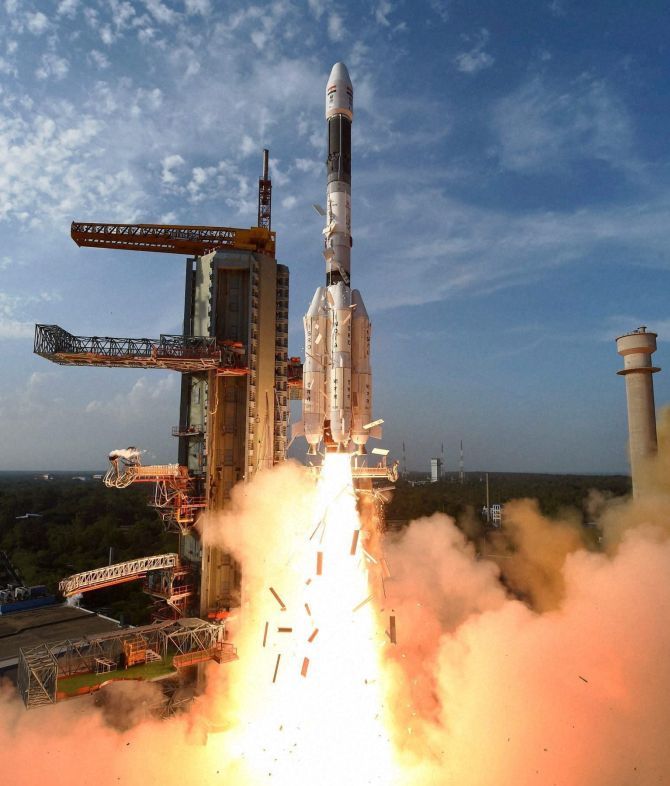
GSLV-MK III, which uses a homegrown cryogenic engine, has to do at least two more launches before it begins commercial operations, report Raghu Krishnan and T E Narasimhan.
The Indian Space Research Organisation (Isro) may have to wait till 2020 to hurl satellites for global customers on its most powerful rocket, as the Geosynchronous Satellite Launch Vehicle (GSLV-MK III), needs to first fulfil local demand for heavy satellite launches.
GSLV-MK III, which uses a homegrown cryogenic engine, has to do at least two more launches before it begins commercial operations.
After that, Isro will need to carry heavier communication satellites to meet the shortage of transponders for Indian customers.
"It should take 3-4 years for us to get into the global market with GSLV-MK III," says Ajey Lele, senior fellow in the Institute for Defence Studies and Analyses (IDSA).
"Like the Polar Satellite Launch Vehicle (PSLV), until we conduct three to four successful launches in 4-6 tonne class of satellites, it will not attract global customers," adds Lele.
Monday's launch demonstrated Isro's mastery of a cryogenic engine after almost three decades of sustained efforts, following which the research organisation can improvise and build more powerful rockets.
GSLV-MK III can carry up to four tonnes of communication satellites into space. The second development flight is slated by March.
At the same time, Isro is working on a more powerful GSLV-MK III, which can carry satellites weighing up to six tonnes into space.
Simultaneously, it will build a two-stage rocket that will be powered by a semi-cryogenic engine in the first stage and a cryogenic engine with a capacity to lift ten-tonne satellites in the second stage.
The agency plans to develop the rocket by incurring a fraction of the cost that they usually end up paying for foreign launchers.
Space consultancy Euroconsult anticipates the launch of 560 satellites over a period of 10 years by various companies. Most of these satellites would replace communications systems meandering in the orbit.
Over two-thirds of the commercial space market remains concentrated in the geostationary orbit -- the destination for almost 300 satellites that are operated by around 30 companies for providing communications and broadcasting services.
The 11 commercial constellations to be launched into the non-geostationary orbits for the twin purposes of communications and satellite imaging should represent a market of $1.6 billion per year over the decade, it said.
Analysts say that the opportunity for Isro will only increase as it perfects a safer and more reliable rocket.
"The market is expanding for many clients for this class of rockets. India, under all circumstances, will offer a cost advantage," says Lele.
Isro will, however, use an Ariane 5 rocket, provided by the European launch provider Arianespace, to hurl the GSAT-11 satellite in its upcoming launch.
Isro's chairman, A S Kiran Kumar, had on Monday said that the organisation's focus would be to reduce reliance on foreign launchers to carry satellites to space.











